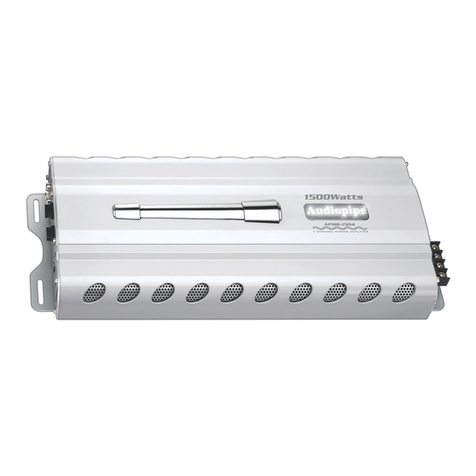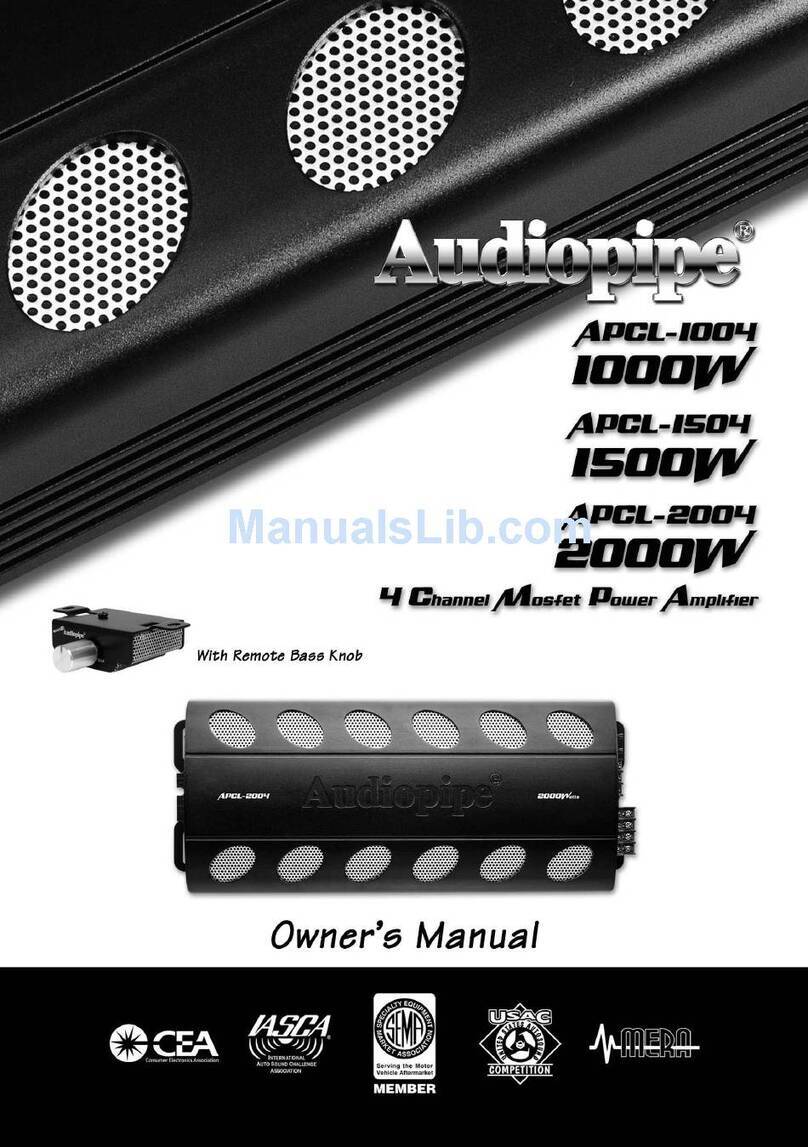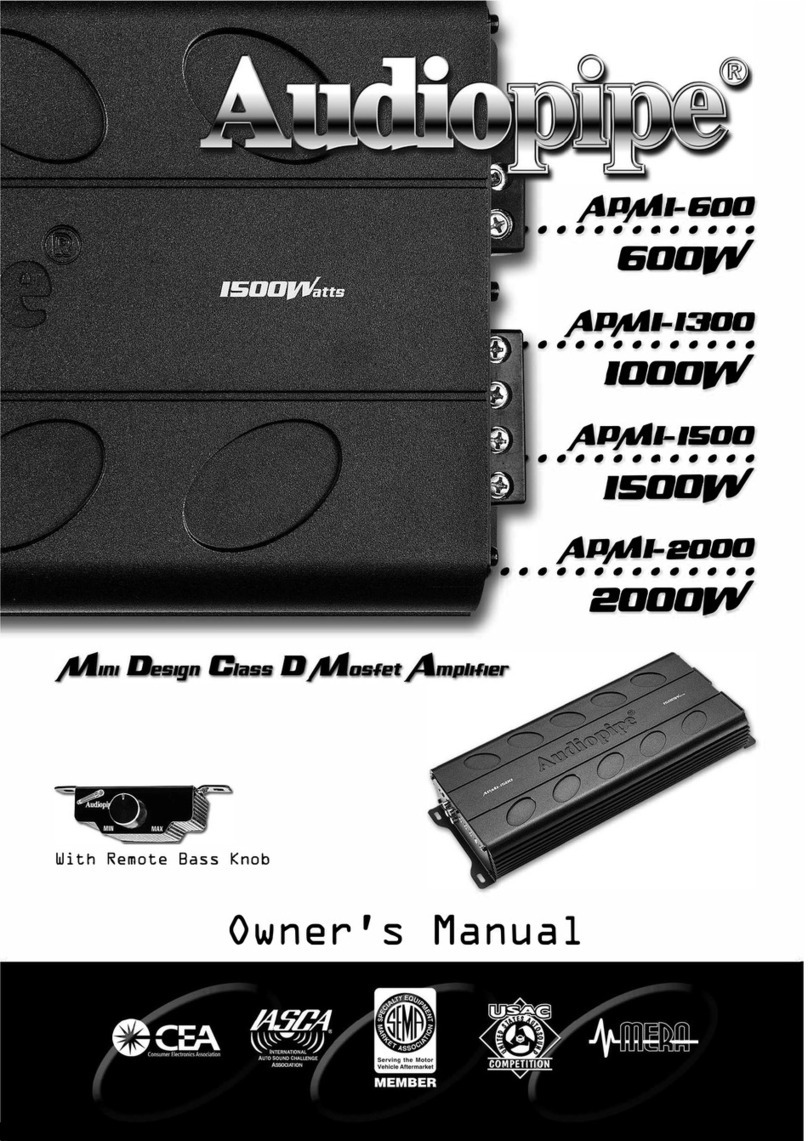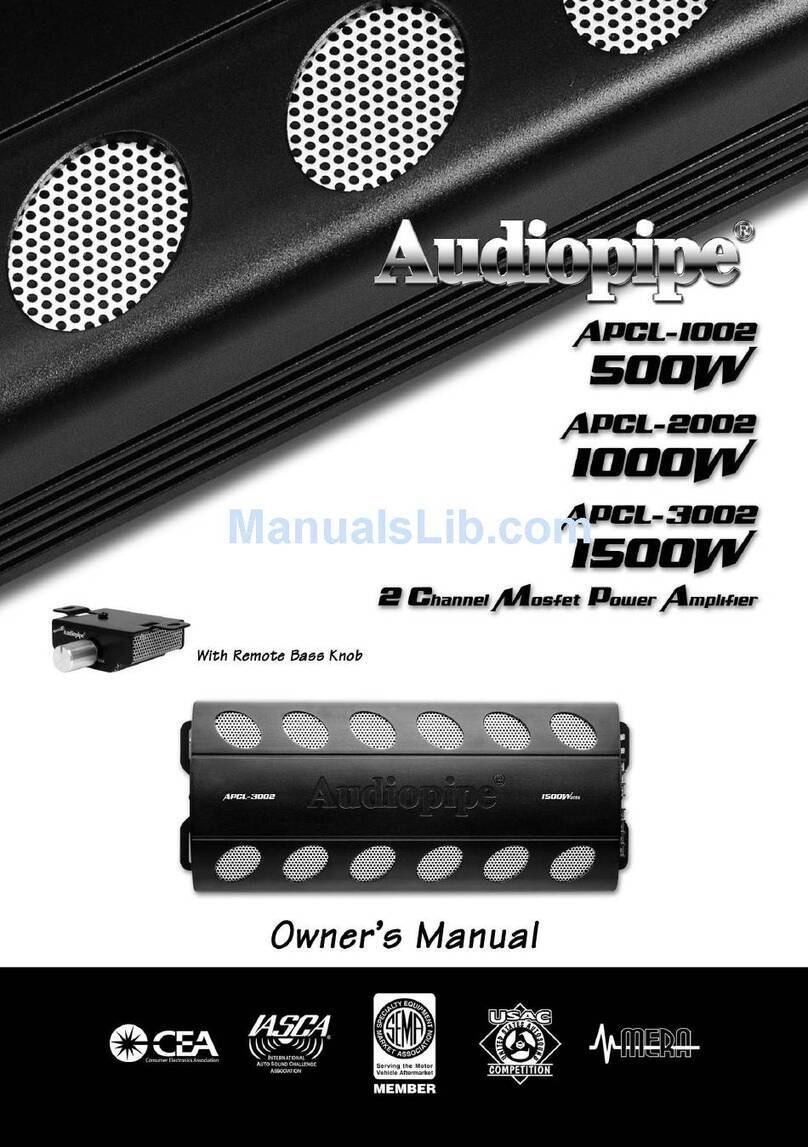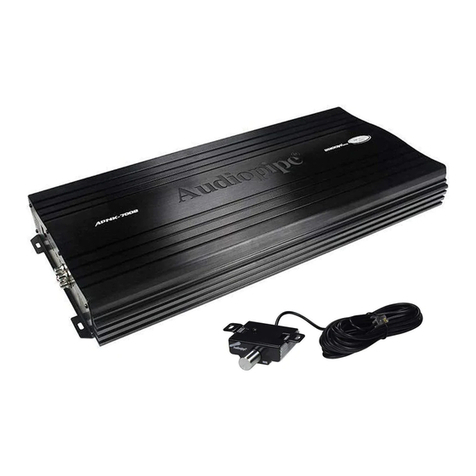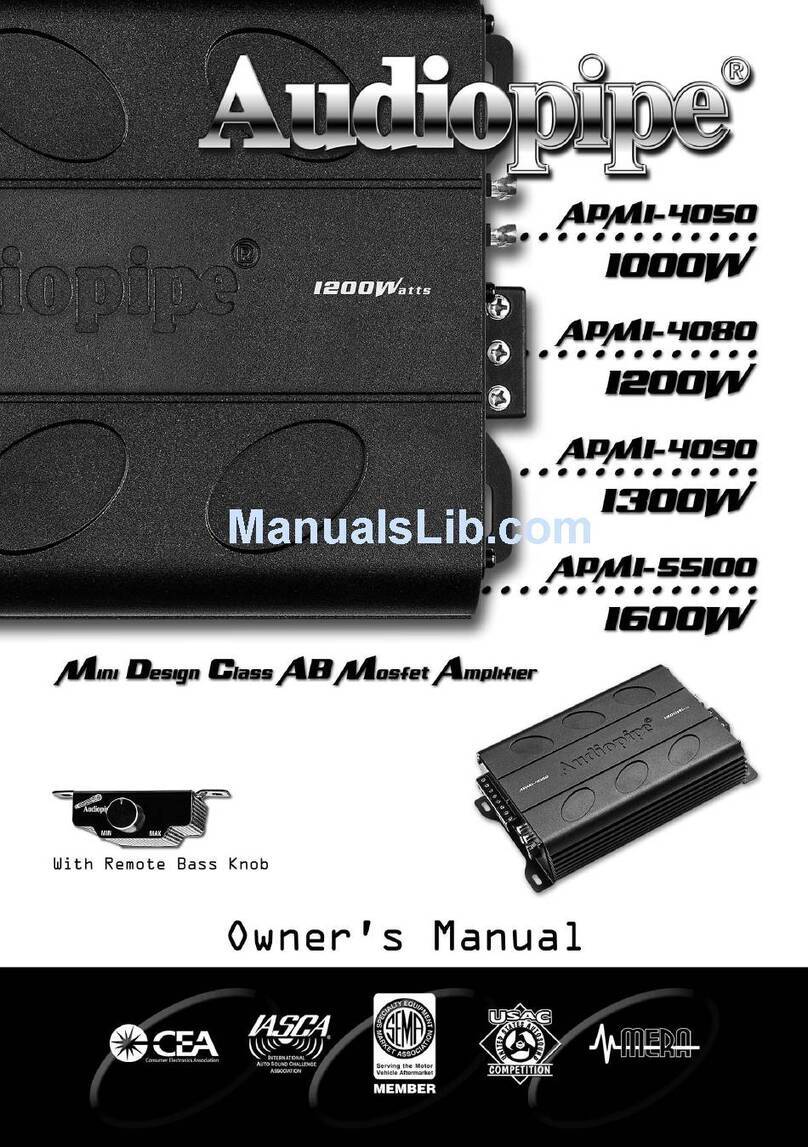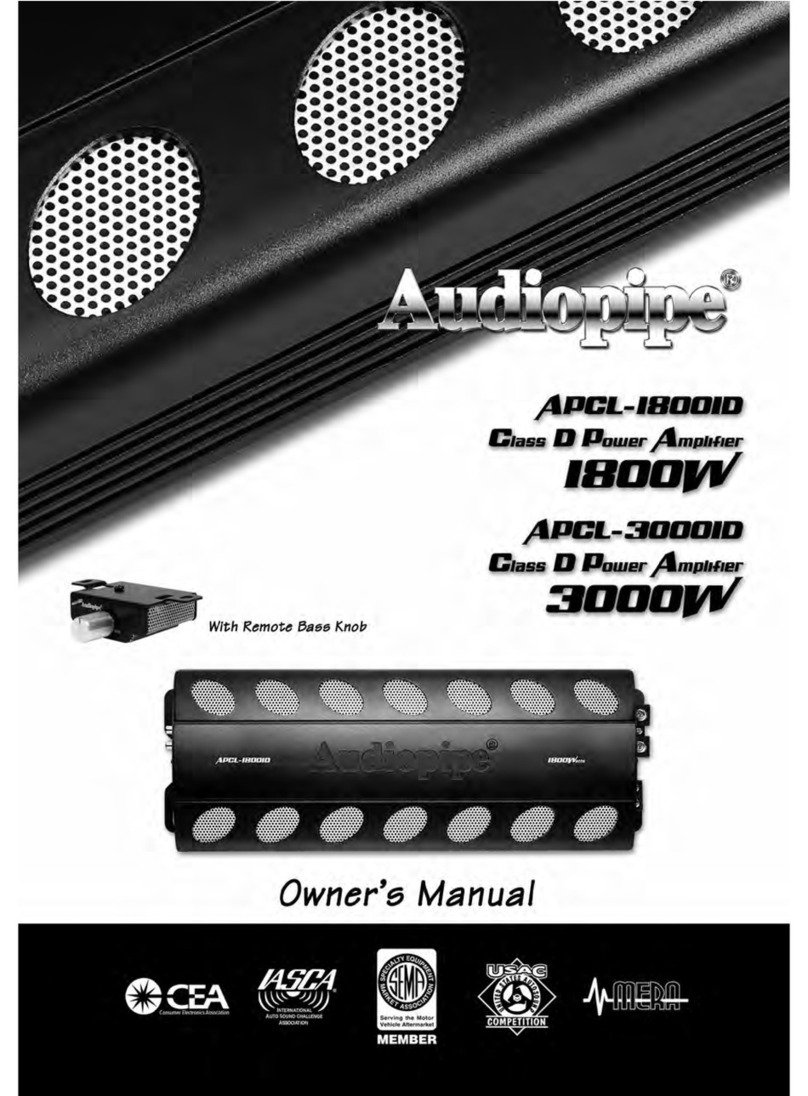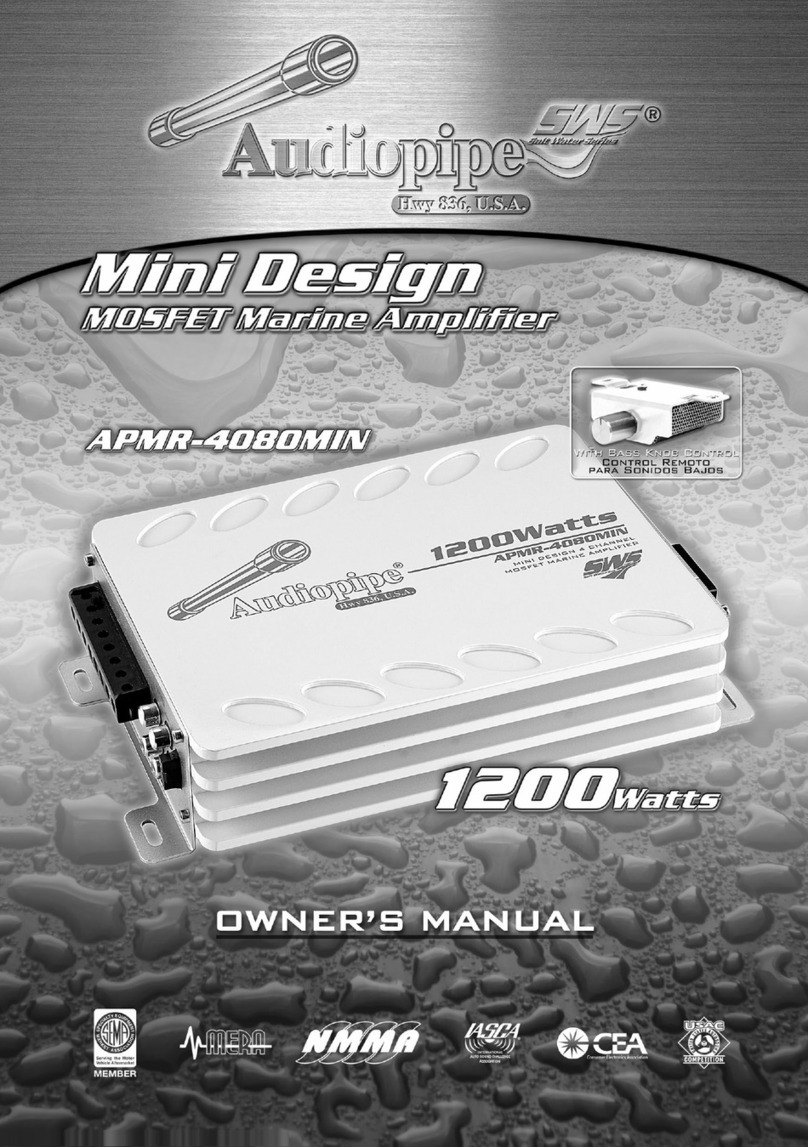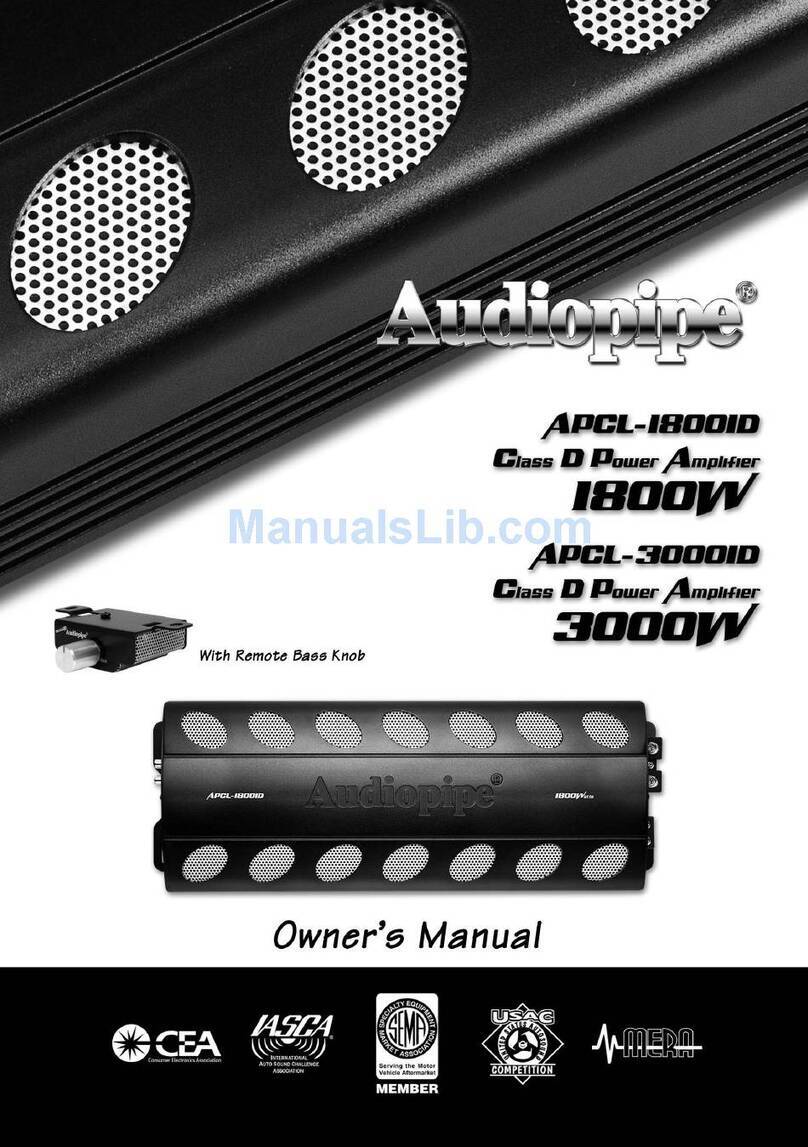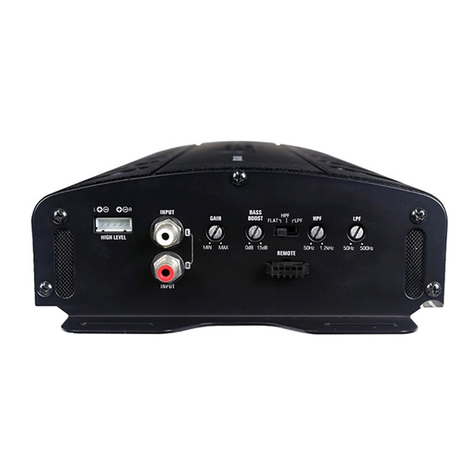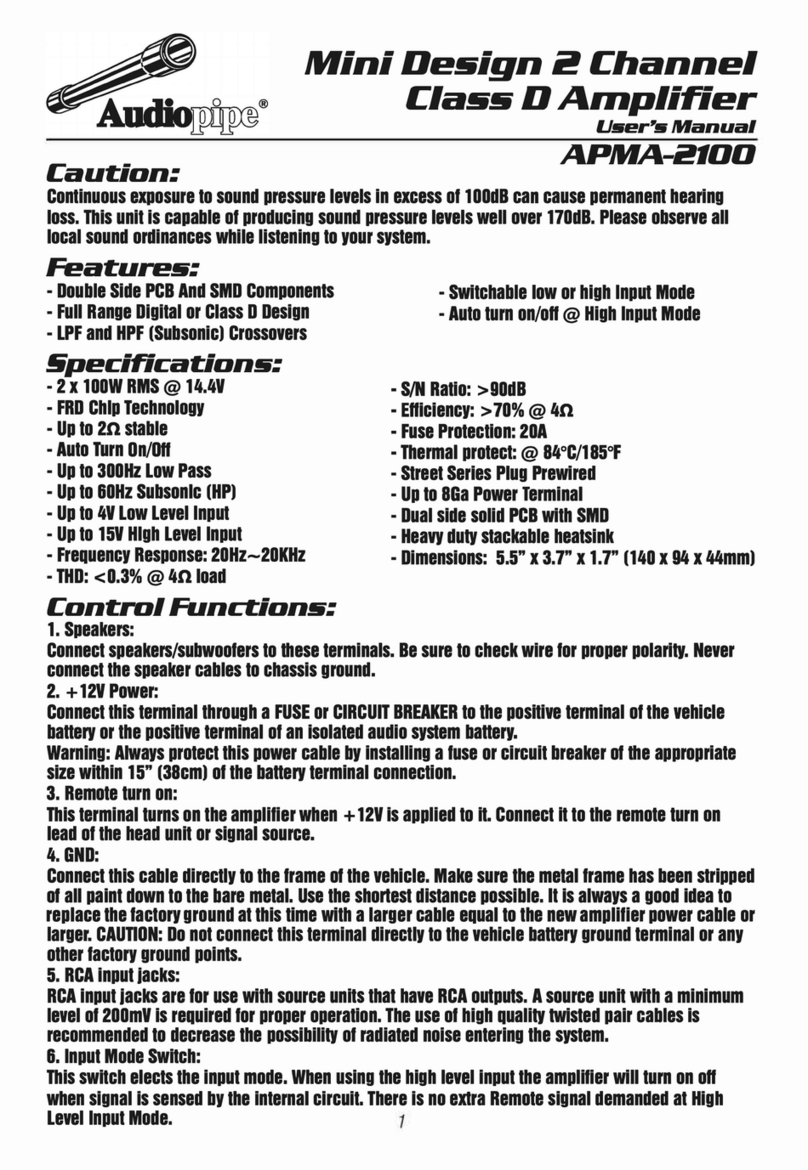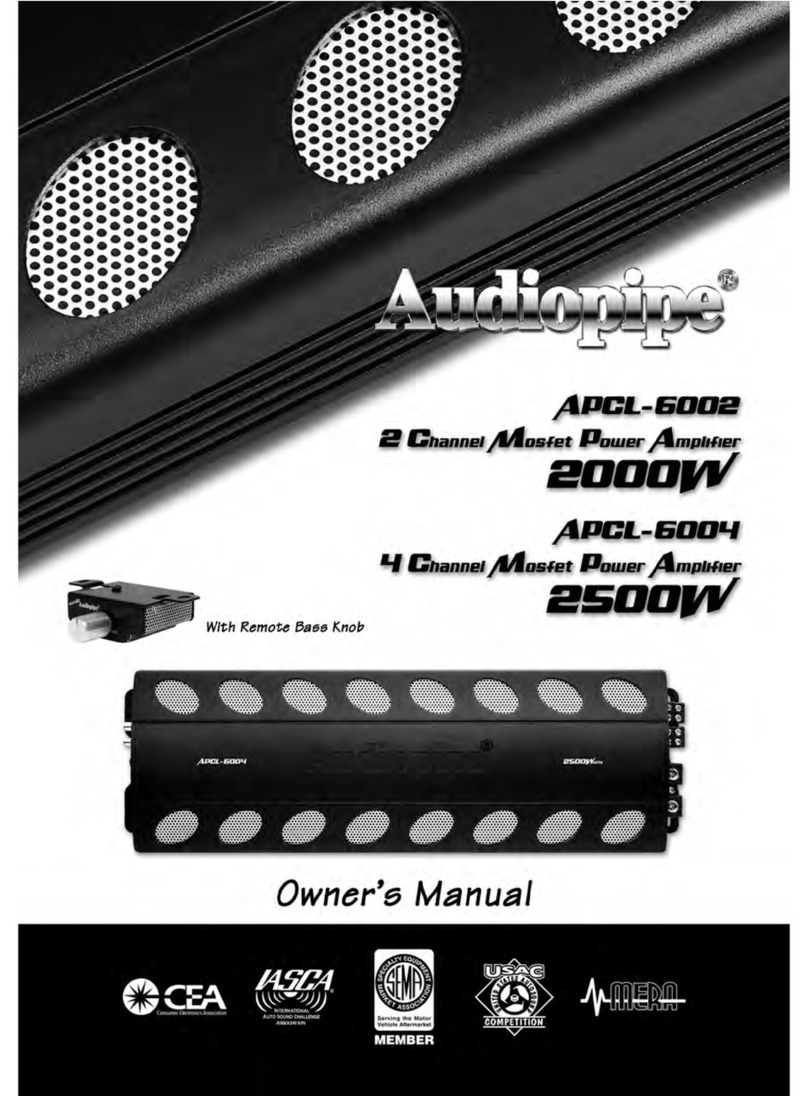
English
This section suggests Mounting and Wiring Precautions for installing the Audiopipe
APMR-2002 marine amplifier. If you do not posses the necessary tools and installation
experience, do not attempt to install this marine amplifier. Instead, contact your local
Audiopipe dealer to perform the installation.
- 4 -
Read all of the wiring precautions prior to making any connections. If you are unsure and/or
don't have the necessary installation hardware, contact your local Audiopipe dealer to
perform the installation.
1.
2.
3.
4.
5.
6.
7.
8.
9.
Before you begin the installation, make sure the source unit Power switch is in the OFF
position.
Disconnect the negative (–) lead of the battery (or batteries) before making any power
connections.
When making connections, be sure that each connection is clean and secure. Insulate
final connections with electrical tape or shrink tubing. Failure to do so may damage your
equipment.
A good ground is critical for the performance of the marine amplifier. A ground wire
should be run directly from the battery to the marine amplifier. Use black insulated 10-
gauge or larger wire for the marine amplifier's ground (–) power lead.
Add an additional fuse holder and fuse at the positive (+) terminal of the battery. The
fuse rating should equal the total current consumption at full output of the marine
amplifier(s). Use red insulated 10-gauge or larger wire for the marine amplifier's positive
(+) power lead. Do not install the fuse until the complete installation has been performed.
When replacing the marine amplifier's fuse, always use one having the same amperage
rating. Substituting a higher rated fuse or a slow-blow type can result in serious damage
to the marine amplifier.
When creating passage holes for power cables, RCA's cords, and speaker wires, use
grommets to eliminate any sharp edges created during drilling. This will protect the wire
from being nicked and causing a short circuit.
Extra cable can cause signal loss and act as an "antenna" for noise. Use only high-
quality RCA cords that are no longer than necessary.
In multiple marine amplifier systems, it is recommended to use a relay on the remote
turn-on lead of the radio.
Prior to mounting the marine amplifier, make sure it is safe to mount the marine amplifier
in that location. Failure to do so can result in serious damage to the boat. In addition,
stainless steel hardware should be used to mount the marine amplifier and additional
accessories. When possible, use a nut and bolt with a lock washer to secure the marine
amplifier. Extra care and attention is necessary in marine installations due to the uncertainty
of water conditions.
Additional precautions and suggestions:
1.
2.
3.
4.
For the most efficient cooling, mount the marine amplifier so cool air runs along the
length of the heat sink, rather than across them. To increase air movement and circulation,
a cooling fan can be installed.
Mount the marine amplifier on a rigid surface; avoid mounting to subwoofer enclosures
or areas prone to vibration.
Prior to drilling and holes, make sure the proposed mounting holes will not cut into the
fuel tank, fuel lines, electrical wiring, or through the boat.
Do not mount the marine amplifier where it is susceptible to water.
